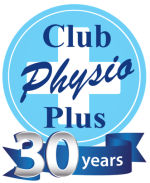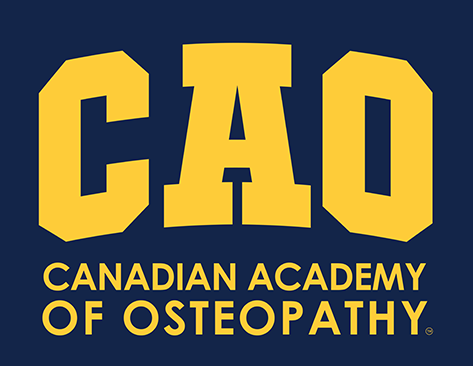Which Professional Should I See for my Injury? (Special to CBC News)
Russell Gunner, C.A.T. (C)
In my last column in March, we talked about what you should do when you get hurt, and what you can expect when you see a physiotherapist. This time, we’ll take a look at which specialist might be best suited to deal with what ails you.
Virtually every professional should be able to help with just about every injury that a weekend warrior brings through their doors. There are not many clinics that will turn people away, but if they can’t help, the good ones should refer you to the right practitioner.
Certified Athletic Therapist
 Athletic therapists (A.T.) specialize in treating sports injuries. All of their training is in the area of the assessment and rehabilitation of orthopaedic conditions — the muscles, bones and joints.
Athletic therapists (A.T.) specialize in treating sports injuries. All of their training is in the area of the assessment and rehabilitation of orthopaedic conditions — the muscles, bones and joints.
They will assess and evaluate the injury based upon your sport and figure out how to get you back into the game as soon as possible. They can be found working closely with professional and national teams, and also in sports clinics across the country. Athletic therapists are known for their aggressive treatment protocol in the attempt to speed up the healing process, and are usually quite successful in this process.
When should I see one?
If you play team sports or are training for a triathlon and feel that something’s not quite right in your leg or shoulder, you might want to book an appointment. Same if you run or play tennis.
Registered Physiotherapists
 Physiotherapists draw on similar training as athletic therapists, but will be far more encompassing of all anatomical injuries. They are trained to assess and treat burn patients, people recovering from strokes, traumatic and congenital neurology as well as the elderly. Some will also treat sports injuries as well.
Physiotherapists draw on similar training as athletic therapists, but will be far more encompassing of all anatomical injuries. They are trained to assess and treat burn patients, people recovering from strokes, traumatic and congenital neurology as well as the elderly. Some will also treat sports injuries as well.
A physiotherapist (P.T.) will offer treatments for all of your injuries. However, not all physiotherapists focus on just athletic injuries, like an A.T. may.
Physiotherapists work in places such as private clinics, hospitals, and seniors homes.
When should I see one?
You will want to see a P.T. after a major trauma (i.e. car accident, accident on the job, stroke, etc.) or if you’re suffering from a chronic injury. A P.T. will also be someone who can help children with various disorders as they grow.
Licensed Acupuncturists
Acupuncture is not just traditional Chinese medicine. There are many therapists who now perform acupuncture as a so-called “tool in their belt.” He or she could be an A.T. by trade, but will do some acupuncture if they feel it is necessary. Just make sure that your therapist is a licensed acupuncturist.
A P.T. or A.T. may treat your shoulder injury, but an acupuncturist may be able to help you with other things such as stomach ailments at the same time.
A study in 2007 found that acupuncture can be more effective than conventional treatments for back pain.
A major issue to keep in mind with acupuncture is that it is not regulated in all provinces. Where there is no governing body, there are no rules saying who can call themselves acupuncturists. If it’s not regulated, your insurance company may not cover your treatments.
In B.C., you need a license from the College of Traditional Chinese Medicine Practitioners and Acupuncturists of British Columbia to practice. Regulations vary by province. Check your local health ministry for details.
When should I see one? You might want to consider an acupuncturist if your traditional therapy hasn’t been achieving results. Acupuncturists can treat most injuries and ailments, but don’t necessarily specialize in one treatment. Some will be very traditional and use herbs to help. Others may take a more western approach (treat only the injury locally).
Chiropractors
Chiropractors are one of the largest primary health providers in Canada with more than 7,000 practitioners across the country. Chiropractors are known for adjusting and manipulating the spine, but can also help other joints or muscles. Many people have been seeing chiropractors for years, receiving treatment on a regular maintenance program to continue addressing their health issues. Every chiropractor is different, so search carefully for which one will best support your problems.
When should I see one? A chiropractor is certainly known for being a specialist in spine adjustments. They’re often the first practitioner to turn to if you are suffering from a neck or back ailment.
Registered Massage Therapists
 A registered massage therapist (RMT) is a professional who can address musculature problems in your body. They will assess and treat those tight and injured muscles over a 30-60 minute massage. If you have never had a real massage before, it’s not always as comfortable as you may think. Don’t get me wrong, they can work wonders on your muscles, but it may be a little uncomfortable getting to that point of relief.
A registered massage therapist (RMT) is a professional who can address musculature problems in your body. They will assess and treat those tight and injured muscles over a 30-60 minute massage. If you have never had a real massage before, it’s not always as comfortable as you may think. Don’t get me wrong, they can work wonders on your muscles, but it may be a little uncomfortable getting to that point of relief.
Please don’t confuse a “masseur” with a RMT. Massage therapy is a regulated health profession in British Columbia, Ontario and Newfoundland. Their services may be covered under your extended health insurance plan.
When should I see one? A RMT could be ideal if you’re suffering from that tight muscle feeling that just won’t seem to go away.
Osteopathy
Osteopaths offer an advanced form of therapy. Most osteopaths were probably one of the above professions (P.T., A.T., R.M.T.) who have taken an extensive five-year course. Osteopaths can be found in various clinics, but are in high demand and tough to find.
Osteopathy emphasizes a holistic approach to health: your body is a unit and possesses self-regulatory mechanisms.
You may come in with a neck injury but your osteopath might also assess your internal organs (liver, stomach, kidney, etc.) to determine whether they are correctly positioned and not putting your body under any undue stress. They might also check the lower body to see if everything is in alignment.
When should I see one? You will usually see an osteopath when your condition has become chronic (going on for months) or for any type of head injury. They are quite effective with cranio-sacral techniques — light-touch manipulation of the bones of the skull, face, mouth and spinal column.
This is not an exhaustive list of the types of practitioners who might be able to help get you back on the field or on the job. It’s a good idea to ask around: if someone’s suffering from the same injury that’s plaguing you, find out what worked for them. Ninety per cent of all referrals that come into my clinic are from word of mouth.
Most importantly, if you are not satisfied with your therapist don’t be afraid to try somebody different. As a general rule of thumb (though it depends upon your injury) you should see some significant change after three or four treatments. If you don’t, try someone else.


